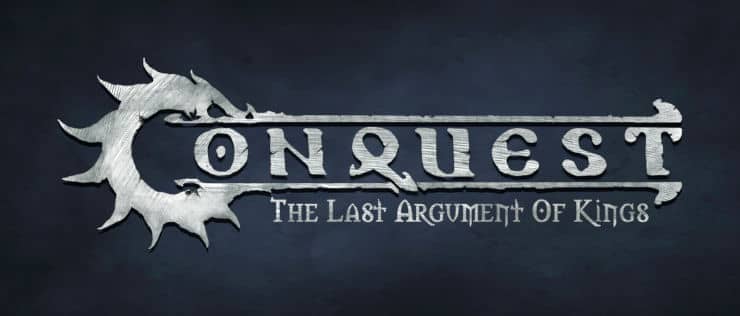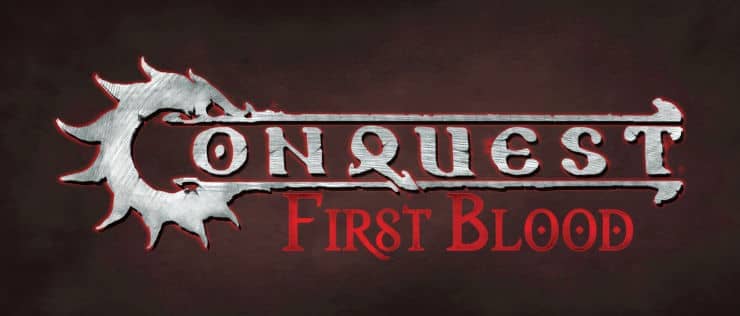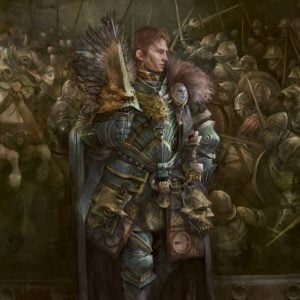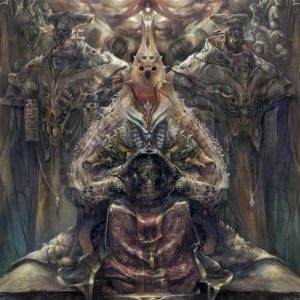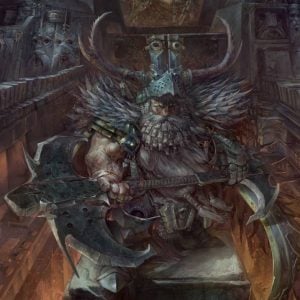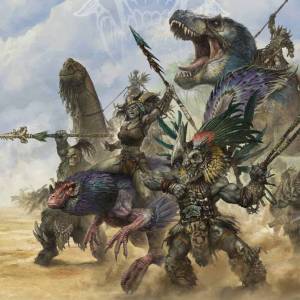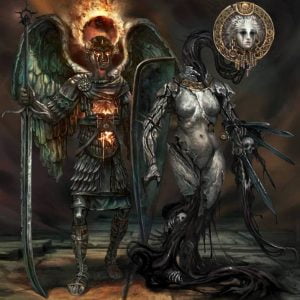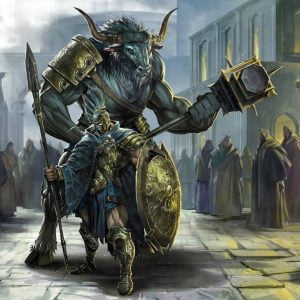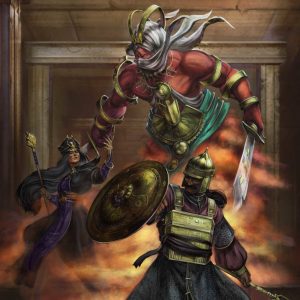
A common misconception about the Old Dominion is the impression of a single civilization, an empire that was built slowly but with an almost streamlined course through history. This view is not without flaw. As Hazlia changed and his understanding of both himself and the world was being altered, the dogma of the theocracy shifted with him, as did the face of his empire. Much like any other long-lasting state, the Old Dominion passed through different stages and had had to endure different challenges, from both within and without, and withstand the tests of time. In fact, the term Domini Dominium, or the Lord’s Dominion, which would come to overshadow the empire’s multifaceted history, was coined much later, when the Dominion had almost carved its final borders on the continent’s map, a mere few hundred years before its decline and Fall. And one man above all else was responsible for this final and catalytic change: the Apostate Caelesor.
Clavthios Primus Julianus was a member of the Primari tribe, who claimed to be descendants of the First Tribe, and nephew of Constantius Primus, one of the most celebrated Caelesors of that period. His entire life he was being groomed to ascend unto the office of Caelesor and to lead Hazlia’s unified people. This grooming was, of course, tailored to the needs of a theocracy: administrative training walked hand in hand with rhetoric and political studies, in addition, of course, to theology, divine philosophy and even the ascetic life of a clergyman. Tutored by the best in their respective fields, Clavthios’ mentors and spiritual fathers were numerous and widely recognized from his parents’ time, paving the way for his inevitable ascension.
Clavthios proved a quick study, his memorizing skills and unparallel education, however, was not always matched by his natural talent or instincts. Entrusted by his uncle with drowning the Second Rebellion of the Seuvic and Russ tribes of the North, his initial success eventually turned into a partial disaster, as his textbook strategies were quickly recognized and countered by the rebels. His successor, Issus Pektussimus, met with his own failures and those proved to be his only redeeming factor, as the general opinion attributed the losses to the ferocity of the rebels, rather than the failures of their own generals. Still, according to most historic accounts, the campaign was a typical representation of Clavthios’ faults, namely a rather dogmatic and traditionalistic mind, that often failed to recognize the need for adaptations and adopt those as necessary. Despite that, however, Clavthios education prominently ticked all the boxes and his theological papers reflected his deep knowledge and understanding of Hazlia’s dogma. His career in the clergy (and therefore his political career) proved to be a straight line to the higher echelons of power. There, however, his streamlined career came to an end; for with the death of Constantius, at the heart of Hazlia’s dominion, a schism was being carved between the people and the newly elect Caelesor Julianus.
As with any period of political unrest in the Old Dominion, the true cause behind the schism was a debate concerning dogma, which always reflected a shift in Hazlia’s own views and goals. Constantius had ruled most of his life according to the paradigms of old, assuming a series of honorifics that reflected the Pantheon’s Triumvirate as rulers of Divinity and Humankind alike. But after the failures of both his nephew and his successor in the campaign against the rebel tribes, Constantius led the last expedition himself, bringing the province back into the fold with ruthless efficiency, while recovering numerous artifacts of the First Tribe from the rebels. Based on these newfound relics, as well as his popularity, upon his return he was hailed as the Will of the Pantokrator – a term much used by the common folk about Hazlia but never canonized in the hymns of the church until then and which means “Almighty, All-Holding or All-Dominant.” Before his death, the whole series of honorifics the Caelesor bore would shift, reshaped to reflect the new dogma, with Hazlia as the Pantokrator. These titles would come to enhance the power of the Caelesor’s seat, drifting away from the paradigm of a “leader among equals” and reflecting the power shifts of the Heavens, where Hazlia was ready to claim his position as sole and undisputed leader of the Pantheon.
The gap left by Constantius’ death would prove hard to fill. The late Caelesor was much beloved by the people of Capitas, who had readily adopted his preaching and the shifts in dogma he had proposed through both action and words. The rest of the Theocracy, however, was not as eager to adopt such changes, seeing the influence of their own gods shrink before the new paradigm and their own power and influence slip away. The compromise was Julianus, whose familial ties with Constantius would appease the population and the former Caelesor’s supporters, while his textbook approach to administration would ensure that the status quo in the Theocracy would not be disturbed. Julianus, however, had different plans.
While he dismissed the title of “Will of the Pantokrator,” Julianus readily adopted and enhanced upon the reinforced powers that Constantius had brought to the Caelesor’s office, only to use them in order to achieve a return to the “traditional values” of the Theocracy. He enhanced the roles of the Legions in every day matters beyond wars. He unearthed practices and preaches from the early days of Hazlia’s worship, some of them dating as far back as the times of the First Tribe, leading modernized and more effective mummification practices to be forbidden in favor of older, traditional practices, which were held in greater ceremony but were much less effective in their preservation. In themselves, these moves meant little practically; or so did Julianus think. In essence, however, Julianus was reawakening an old division of the Theocracy: “pure” citizens, descendants of the First Tribe, and conquered nations were being divided.
Politically, he believed that this way he would offer both sides what they truly desired; an increased influence of the Caelesor’s office and the Assembly but a dogmatic enhancement of the role of the Pantheon. On a personal level, however, Julianus was driven more by his theosophical views rather than his political sense. His analysis of dogma was specific and based on centuries of practices and, in his mind, this was adamant and eternal. At the same time, he feared that the absolute unification of everything in the Theocracy would lead to its collapse and dissolution for it did not reflect the founding principles of the Theocracy. His own experience in the northern rebellion had taught him that the strength of the Theocracy lied in its diversity and this, he believed, was best reflected in the form of a ruling Pantheon; Hazlia was the first among equals. The blessing he had received during the ceremony of his ascension to the office of Caelesor proved that beyond any doubt, in his mind. His reformations, therefore, would advocate a return to the past, where each tribe was distinct, each church of the Pantheon had its own practices and the Caelesor with his Assembly ensured the unity of the Theocracy as a whole, mainly through control of the Legions. The reaction was immediate from both sides of the schism and his support begun to dwindle faster than his reformations could be brought into effect. But the deposition of a Caelesor was a thing unheard of at the time. It took only five years for this to be rectified.
The truth is that at the time the very concept of tribes and different churches had much faded in the minds of the people and existed mostly in theory and politics. Centuries of living side by side, mixing and worshipping the same dogma, had forged a new identity in the minds of most of its inhabitants. This was Hazlia’s success; and Julianus’ failure to realize. The diversity he dreamed of still existed and the only thing his reforms achieved was to carve divisions. Overnight, families who had been native to Capitas for generations were treated and viewed by the Theocracy as children to be guided at best, conquered to be ruled at worst. Allowed to follow their own gods and sensing a weak Caelesor, supported by a weakened dogma, distant Legions were, perhaps unsurprisingly, the first to cause tension, rushing to the defense of their clergy or their province before they rushed to the support of the Caelesor. Pockets of insurgencies appeared throughout the land, as the once complicated but understood unity of the Theocracy was being redefined. Loathe to do so but forced by his political isolation, Julianus led the campaign against these insurrections himself, only to meet with another military failure. His own Legions’ officers ignored him and he was abandoned on the field of battle, when none followed his charge. He was never seen again, neither alive nor dead. For the next two years, the assembly of the Caelesor would rule in his absence and its efforts concentrated on the establishment of a new dogma that would bring peace to the land. Eventually, he would come to be remembered as the Apostate Caelesor, his heretical views almost breaking the unity of Hazlia’s empire. His fate remains unknown and, perhaps, unimportant. His role, some note, was over and his involuntarily mission was accomplished to perfection. In the end, Julianus was never officially deposed. A new Caelesor was needed under the new dogma and indeed Hazlia’s blessing was offered as Caelesor Iovianus ascended to office. The nuances of the new dogma were as numerous as they were complicated. The end result, however, is known: the “Domini Dominium” was established, as all the people and all the churches were united under the banner of Hazlia Pantokrator. Hazlia was being forged into the undisputed ruler of the people and, more importantly, the Pantheon.

